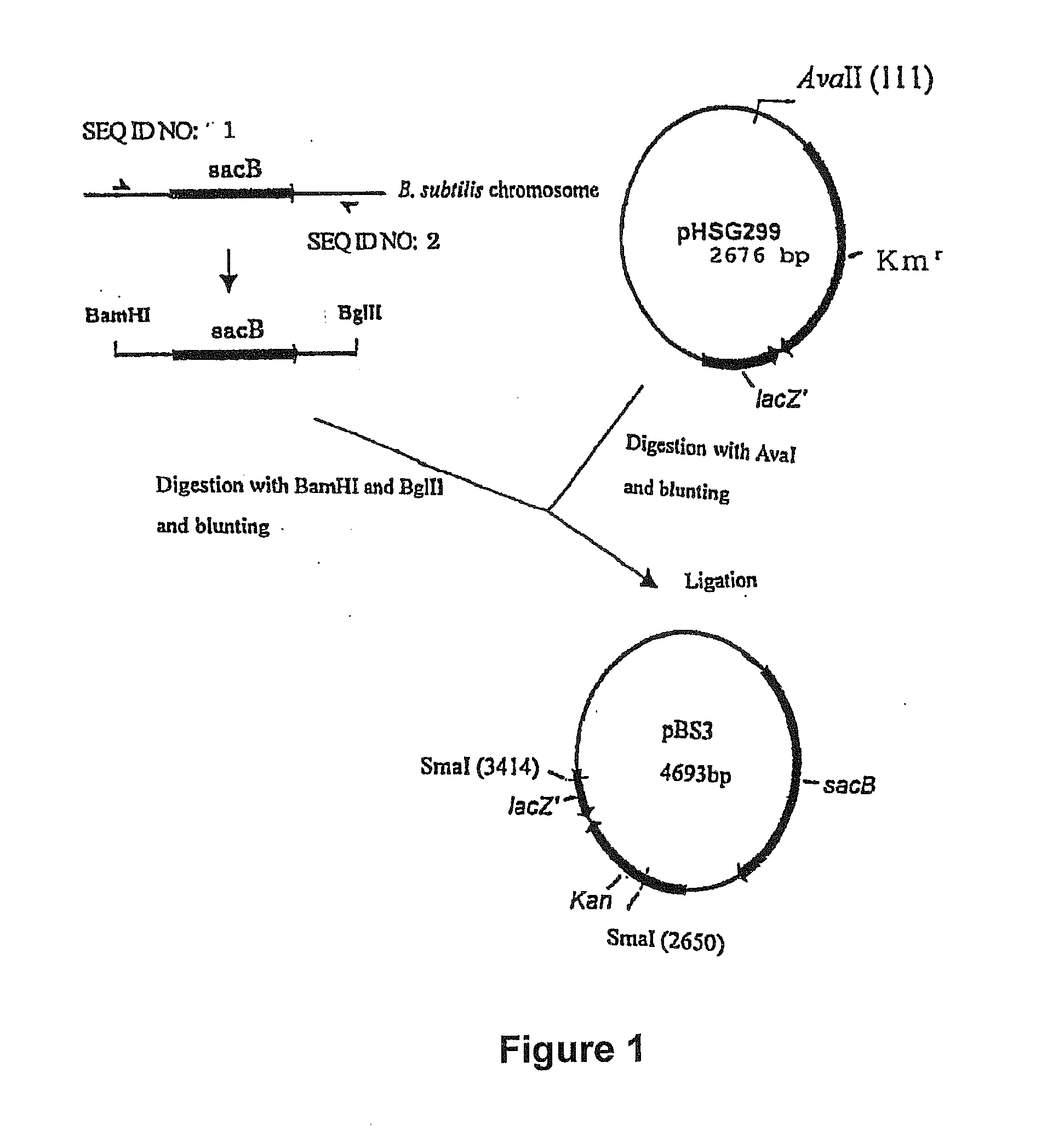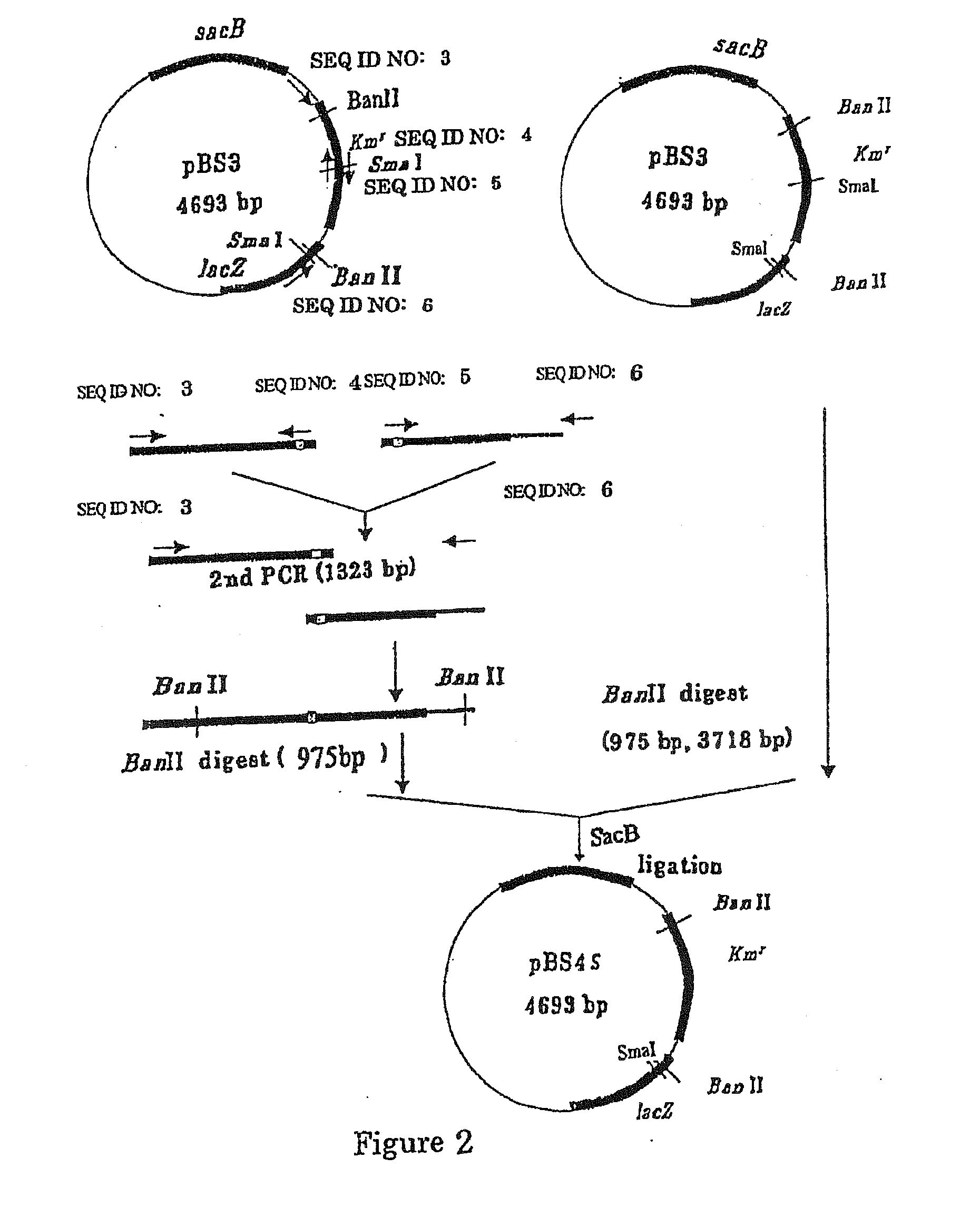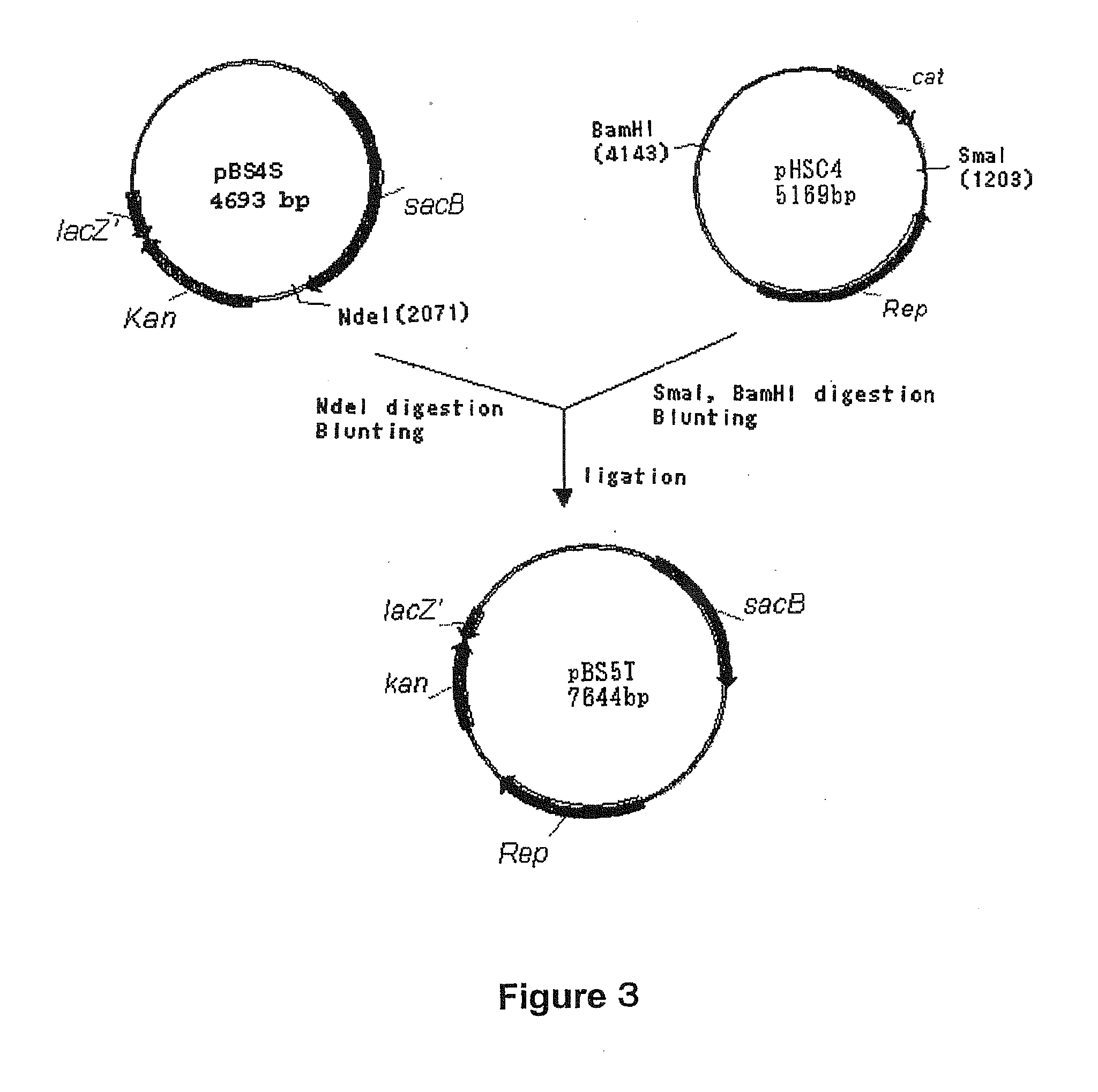L-Amino Acid-Producing Bacterium and a Method for Producing L-Amino Acid
a technology of l-amino acid and bacterium, which is applied in the field of lamino acid-producing bacterium and a method of producing lamino acid, can solve the problems of increasing the production cost, reducing the productivity of fermentation, and the actual function of the gene has not been confirmed, so as to improve the ability to produce l-amino acids, reduce the activity of acetyl-coa hydrolase, and improve the effect of l-amino
- Summary
- Abstract
- Description
- Claims
- Application Information
AI Technical Summary
Benefits of technology
Problems solved by technology
Method used
Image
Examples
example 1
[0165] Construction of the Disruption Vector Carrying the sacB Gene
[0166] (A) Construction of pBS3
[0167] A sacB gene (SEQ ID NO: 19) was obtained by PCR using the chromosomal DNA of Bacillus subtilis as a template and oligonucleotides of SEQ ID NOS: 1 and 2 as primers. The PCR was performed using LA taq (manufactured by TaKaRa) as follows: one cycle of heat retention at 94° C. for 5 minutes; and 25 cycles of denaturing at 94° C. for 30 seconds, annealing at 49° C. for 30 seconds, and elongation at 72° C. for 2 minutes. The PCR product was purified by a conventional method, and then digested with BglII and BamHI and blunt-ended. The fragment was inserted into pHSG299 which had been digested with AvaII and blunt-ended. This DNA was used to transform competent cells of Escherichia coli JM109 (manufactured by TAKARA BIO INC.). Then, the transformed bacterial cells were spread on LB agar medium containing 25 μg / ml Kanamycin (hereinafter, abbreviated as “Km”), and incubated for one nigh...
example 2
[0173]
[0174] (A) Cloning of a Fragment to Disrupt the Lactate Dehydrogenase Gene
[0175] A gene fragment containing lactate dehydrogenase (hereinafter, abbreviated as “ldh gene”) derived from Brevibacterium lactofermentum 2256 strain having the ORF deleted was obtained by cross-over PCR using synthetic DNAs designed based on the nucleotide sequence of the ldh gene of the Corynebacterium glutamicum ATCC13032 strain (SEQ ID NO: 21: GenBank Database Accession No. NC—003450), as primers. Specifically, PCR was performed by a conventional method using a chromosomal DNA of Brevibacterium lactofermentum 2256 strain as a template and the synthetic DNAs of SEQ ID NOS: 7 and 8 as primers to obtain the N-terminal fragment of the ldh gene. On the other hand, to obtain a C-terminal fragment of the ldh gene, PCR was performed by a conventional method using the chromosomal DNA of Brevibacterium lactofermentum 2256 strain as a template and synthetic DNAs of SEQ ID NOS: 9 and 10 as primers. SEQ ID NOS...
example 3
[0182]
[0183] (A) Cloning of a Fragment for Disrupting Acetyl-CoA Hydrolase Gene
[0184] A gene fragment containing acetyl-CoA hydrolase gene (hereinafter, the gene is referred to as “ach”) derived from Brevibacterium lactofermentum 2256 strain having the ORF deleted was obtained by cross-over PCR using synthetic DNAs designed based on the nucleotide sequence of the gene of Corynebacterium glutamicum ATCC13032 (SEQ ID NO: 23: GenBank Database Accession No. NC—003450). Specifically, PCR was performed by a conventional method using the chromosomal DNA of Brevibacterium lactofermentum 2256 strain as a template and the synthetic DNAs of SEQ ID NOS: 13 and 14 as primers to obtain the C-terminal fragment of the ach gene. Alternatively, to obtain an N-terminal fragment, PCR was performed by a conventional method using the chromosomal DNA of Brevibacterium lactofermentum 2256 strain as a template and synthetic DNAs of SEQ ID NOS: 15 and 16 as primers. SEQ ID NOS: 14 and 15 were partially comp...
PUM
| Property | Measurement | Unit |
|---|---|---|
| temperature | aaaaa | aaaaa |
| temperature | aaaaa | aaaaa |
| temperature | aaaaa | aaaaa |
Abstract
Description
Claims
Application Information
 Login to View More
Login to View More - R&D
- Intellectual Property
- Life Sciences
- Materials
- Tech Scout
- Unparalleled Data Quality
- Higher Quality Content
- 60% Fewer Hallucinations
Browse by: Latest US Patents, China's latest patents, Technical Efficacy Thesaurus, Application Domain, Technology Topic, Popular Technical Reports.
© 2025 PatSnap. All rights reserved.Legal|Privacy policy|Modern Slavery Act Transparency Statement|Sitemap|About US| Contact US: help@patsnap.com



